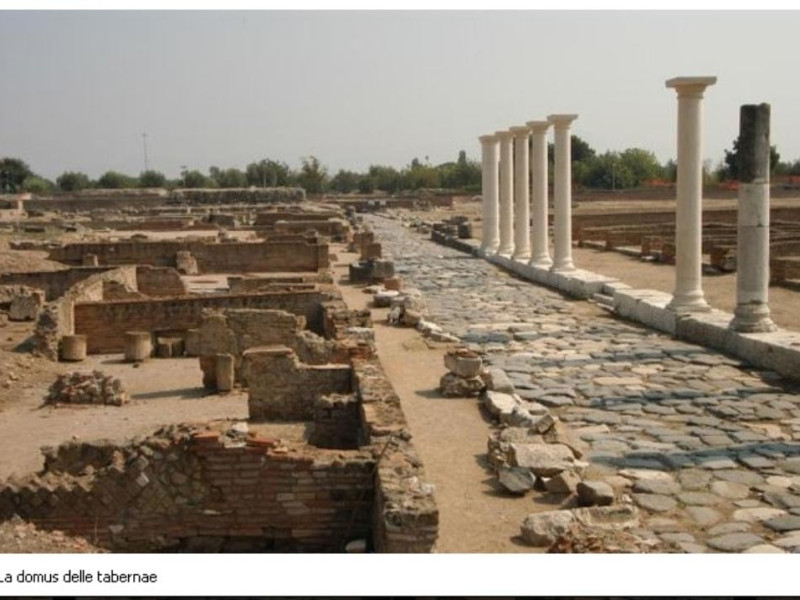Destinazioni - Comune
Minturno
Where
Minturno (Latina)
Minturno is a city and comune in the southern Lazio, Italy, situated on the north west bank of the Liris (also known as the Garigliano), with a suburb on the opposite bank about 18 kilometres (11 mi) from its mouth, at the point where the Via Appia crossed it by the bridge called Pons Tiretius.
It has a station on the Rome-Naples main railway line.
History
The ancient Minturnae (41.241973,13.768185) was one of the three towns of the Ausones which made war against Rome in 314 BC, the other two being called Ausona (modern Sessa Aurunca) and Vescia; and the Via Appia was made two years later.
It became a colony in 296 BC.
In 88 BC, Gaius Marius hid himself in the marshes of Minturnae in his flight from Sulla.
The city was probably destroyed in 883 by the Saracens, who in the following years held the circumstant plain. Its low site was increasingly abandoned by the population in favour of that of the modern town of Minturno (known as Traetto until the 19th century), 140 metres (460 ft) above sea-level.
They were ousted by the Catholic league after the Battle of Garigliano (915), and Minturnae passed to Gaeta. Two years later, however, it was again ravaged by the Magyars. In 1058 it was partly acquired by the Abbey of Montecassino, but soon after was conquered by the Normans.
In the 13th century it went to Richard V dell'Aquila, duke of Gaeta. Subsequently it was a Caetani possession, and later assigned by Charles VIII of France to his general Prospero Colonna. It was a Carafa fief until 1806, and was integrated in the newly formed Kingdom of Italy on 30 October 1861.
Minturno was part of the Gustav Line during World War II, and suffered heavy bombings.
Main sights
Roman remains
The Roman ruins consist of an amphitheatre (now almost entirely demolished, but better preserved in the 18th century), a theatre in opus reticulatum, and an aqueduct in opus reticulatum, the quoins of which are of various colours arranged in patterns to produce a decorative effect. There are also a statue commonly called of Sepeone (Scipio), from the Late Empire age, and the remains of a Capitolium, built in Italic-Etruscan style after 191 BC, near the Via Appia.
The Thermae of Suio, some kilometers outside the city, are known since very ancient times, as they are cited by both Pliny the Elder and Lucanus. They are still exploited. The place was the site of a battle between France and Spain in 1503.
Close to the mouth of the river was the sacred grove of the Italic goddess Marica.
Other sights
The Baronal Castle (C. 9th century) housed famous figures such as St. Thomas Aquinas, Isabella Colonna and Giulia Gonzaga
The church of St. Francis, built around 1360 by Roffredo III Caetani, nephew of Pope Boniface VIII
The church of Annunziata (c. 1300), damaged by the Turks pirates in 1552, by the French-Polish troops in 1799 and by a fire in 1888. In 1930 a restoration removed all the Baroque additions and showed the presence of ancient frescoes.
The church of St. Peter (11th-12th centuries). The façade is preceded by a staircase and a porch with 4 arcades (14th century). The interior has a nave and two aisles divided by tall columns with ogival arcs. The right aisle houses the notable Baroque Sacrament Chapel (1587), decorated with polychrome marbles. Other artpcieces include a candelabre (1264) with mosaic decoration, and the Pergagum, with antique columns and 13th century mosaics. It has a three-floor belfry.
The fraction of Scauri, on the Gulf of Gaeta, takes its name from the Roman consul Marcus Aemilius Scaurus, who had a sumptuous villa here. It has some notable ancient watchtowers, including the Torre Saracena, at the mouth of the river Garigliano, erected between 961 and 981, commemorates a victory gained by Pope John X and his allies over the Saracens in 915 (see battle of Garigliano). It is built of Roman materials from Minturnae, including several inscriptions and sculptures.
Emigrants
In the early 20th century, many residents of Minturno and the villages around it emigrated to Stamford, Connecticut, in the United States. A club for Minturnese immigrants, the Minturno Social Club was founded in the West Side of Stamford in 1939 (and has since moved to the Springdale district) and only made up of members whose families hailed from Minturno, had 120 members in 2007. A Minturnese tradition, the Festa de la Regna ("Festival of Wheat") celebration of harvest day and honoring the Madonna delle Grazie, is still honored in Stamford with an annual procession.
There is also a Minturno social club in the Woodbridge section of Toronto, Canada.
Michael Fedele, the lieutenant governor of Connecticut, was born in Minturno in 1955.
Twin towns
Stamford, USA, since 2008
link
http://www.minturnoscauri.it
References
Sources
This article incorporates text from a publication now in the public domain: Chisholm, Hugh, ed. (1911). Encyclopædia Britannica (11th ed.). Cambridge University Press.
This article incorporates text from a publication now in the public domain: Herbermann, Charles, ed. (1913). Catholic Encyclopedia. Robert Appleton Company.
External links
Purcell, N., R. Talbert, T. Elliott, S. Gillies. "Places: 432940 (Minturnae)". Pleiades. Retrieved March 8, 2012.

